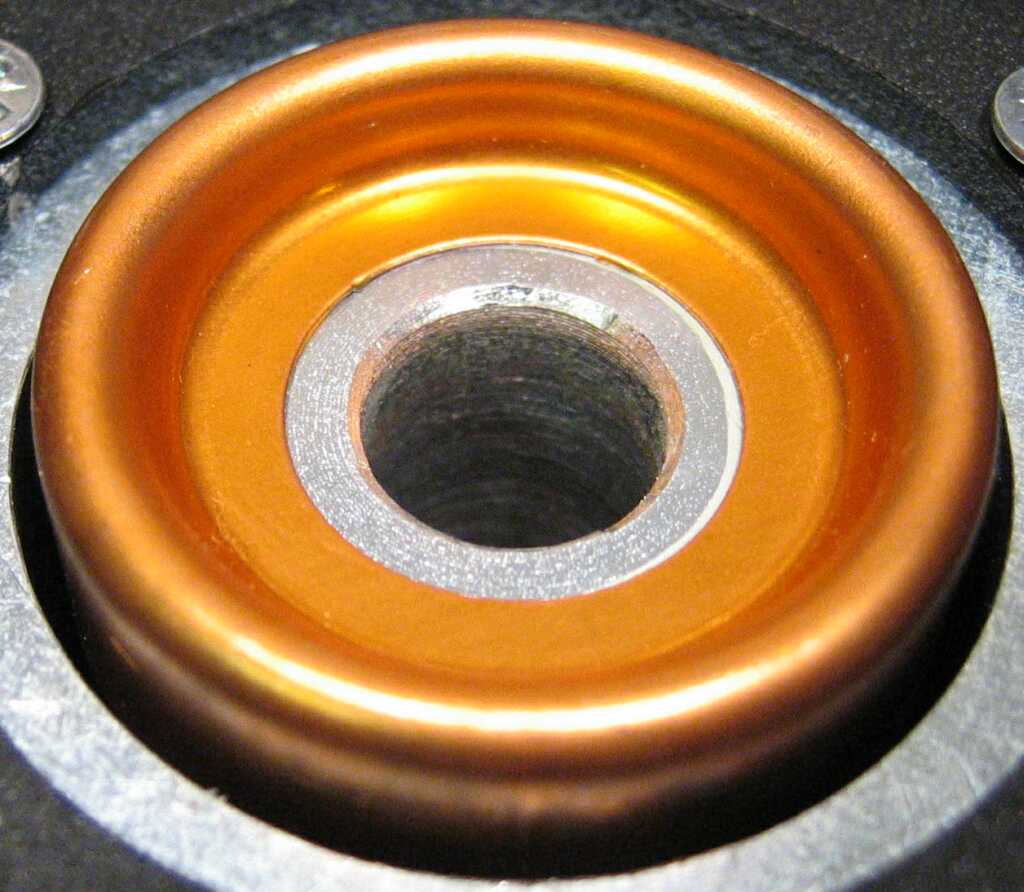I'm sending two 13m/8640 drivers to Madisound to be re-coned into 13m/8636. The motors are the same and for a few bucks more on reconing I can get the kevlar version that I've wanted to try out.
Before boxing them, I dissected them to inspect the motors. I thought that you guys might like to see a couple of the pics. If either Mark or zaph is interested, when I get them back I could send in one each of a 8636 and 8640 to see some distortion measurements. I had liked the 8640, but the 12m was an improvement. I think, though, that it may have had as much to do with doing a better job of the highpass on the 12m (after living with the 8640 for several years), so I'm planning on making comparisons later.
I'm impressed with the amount of copper in these things. Once the FR is smoothed, I would expect good results from these. In raw form the 8640 will likely look pretty bad above about 4K due to the on-axis breakup, but an LR2 at 2K has a pretty clean FR. The 8636 is smooth to start, so I would think that it might fare better. In any case, I'm curious to compare them to the 12m in the distortion arena.
I can't recall anyone having tested them. If that's been done, please point me to the results.


Before boxing them, I dissected them to inspect the motors. I thought that you guys might like to see a couple of the pics. If either Mark or zaph is interested, when I get them back I could send in one each of a 8636 and 8640 to see some distortion measurements. I had liked the 8640, but the 12m was an improvement. I think, though, that it may have had as much to do with doing a better job of the highpass on the 12m (after living with the 8640 for several years), so I'm planning on making comparisons later.
I'm impressed with the amount of copper in these things. Once the FR is smoothed, I would expect good results from these. In raw form the 8640 will likely look pretty bad above about 4K due to the on-axis breakup, but an LR2 at 2K has a pretty clean FR. The 8636 is smooth to start, so I would think that it might fare better. In any case, I'm curious to compare them to the 12m in the distortion arena.
I can't recall anyone having tested them. If that's been done, please point me to the results.



 Stupid me!
Stupid me!  My point is, Usher 8945P can do better than Scan's new motor SD-2 overall for a midwoofer, and even using a bigger voice coil than the 7" Revelator. So it doesn't really look like to me an improvement going to SD-2, unless it would be for a woofer where midrange is not important. Even there a combination can be used, but cost may become an issue then.
My point is, Usher 8945P can do better than Scan's new motor SD-2 overall for a midwoofer, and even using a bigger voice coil than the 7" Revelator. So it doesn't really look like to me an improvement going to SD-2, unless it would be for a woofer where midrange is not important. Even there a combination can be used, but cost may become an issue then.




Comment